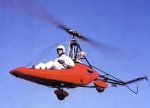Wheels on a helicopter do several things that skids won't. First, you can taxi on the surface, which makes a really tiny wash compared to hover taxi (because the blades aren't carrying the weight of the aircraft), so it doesn't blow stuff into your airport neighbors and get everybody mad at you. It also doesn't kick up much dirt or snow for obstructing your view. Second, you don't need any ground handling gear because it rolls in and out of the hangar easily as is. Third, you can shut down near a fuel pump, wait your turn, and then pull it over close for refueling with a tow bar, instead of trying to hover up next to the fuel station (if you've ever tried to hover up close enough for a short fuel hose to reach in twitchy gusty winds with tall light poles next to the pump above your rotor disc height, you'd appreciate that). Fourth, you can do smooth running take-offs when the power available for hovering is marginal as in high-hot conditions. Fifth, if you auto to the ground you can roll it on easily and make a very gentle arrival.
Wheels are not quite as forgiving for really nasty rough ground; a skid can bridge a big hole, while a wheel might go into it if you screw up. On extremely soft ground, there's a bit less surface area in contact so you can sink more (but I've had skids go pretty deep into the mud, too).
As with any wheeled aircraft, you don't want to touch down with sideward motion, but that's true for skids, too (you risk rollover if you shove a skid sideways on the ground).
My Sikorsky S-52, as one example (shown below), had four wheels. The front pair had a castering lock, originally intended so that you could lock the wheels straight ahead to keep it from turning and rolling off the side of a pitching ship deck at sea. You unlock them for taxi; they are not directly steerable (no linkage to the pedals). The tail rotor pedals had toe brakes for the mains in the usual fashion. Taxi can be done with the collective full down, using forward cyclic to get it moving and the tail rotor (through the pedals) to turn. It's all very natural after a little bit of practice. I would often surface taxi to get fuel, surface taxi to the runway, and do a rolling take off while heavy. Then when landing (and fuel burned off), I would do a hover approach to the helipad, and surface taxi back to the hangar. For a rolling landing, I liked to touch it down just as I was losing translational lift and getting good ground effect, so the speed was quite low. You don't want to wheelbarrow it, so I'd touch down mains first; the deck angle was pretty small because you're not doing a deep flare and there was no risk of hitting the tail.





